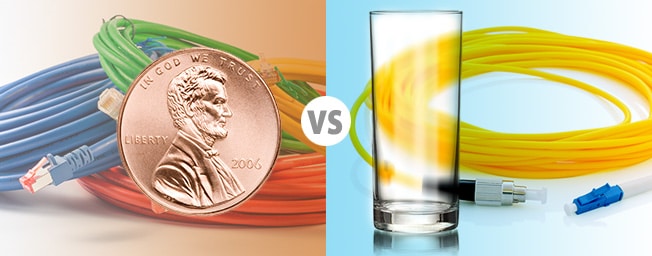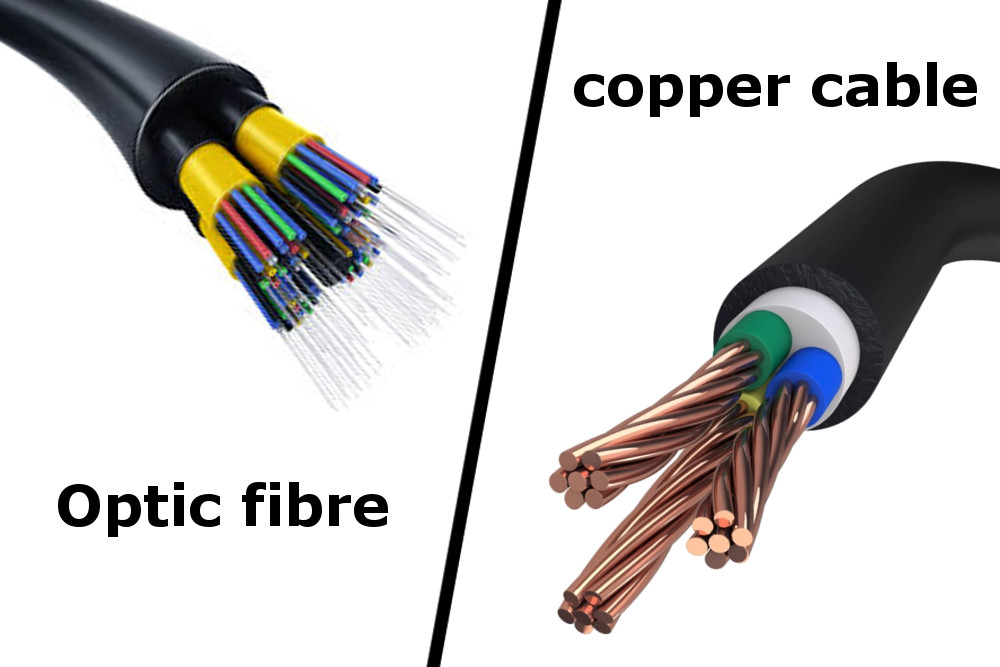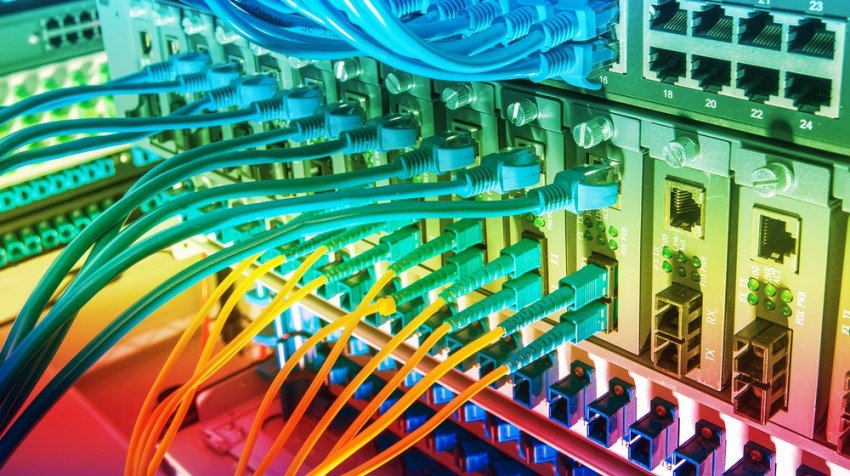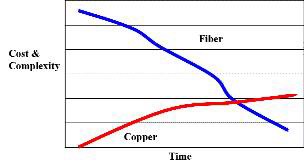Copper-based cabling has held the dominate position as the most prevalent horizontal cable medium for years. The reason of this can be partly explained by the fact that copper cable is inexpensive and easy to install. Additionally, the networking devices associated with copper cabling are less costly compared with their fiber optic counterparts. Copper cable comes in a dazzling array of types, and since cable type determines the network’s topology, protocol, and size, understanding the features of each copper cable is necessary for the installation of a successful and robust network.
By far the widely installed and most economical copper cable today is twisted-pair wiring. In this form of wiring, two conductors are wound together (“twisted”) for the purposes of canceling out electromagnetic interference (EMI) from external sources, and crosstalk from neighboring conductors. Unshielded twisted pair (UTP) and shielded or screened twisted pair (STP or ScTP) are the two primary varieties of twisted pair on the market today. Screened twisted pair (ScTP) is a variant of STP. Next, we will focus on the characteristics and possible applications of them.
Unshielded twisted pair (UTP) copper cable has been used in telephone systems for many years. And it was also intensively applied in local area networks (LANs) since late 1980s. UTP cabling typically has only an outer covering (jacket), which covers one or more pairs of wire that are twisted together. The lack of shielding enables a high degree of flexibility and durability, lower cost and simpler installation of UTP. During the past years, the bandwidth capabilities of UTP are consistently being improved, making it popular especially in computer networking. Four-pair UTP cables are often used for horizontal cabling, while multi-pair (25-,50-, or 100-pair) UTP cable is more commonly seen in backbone cabling.
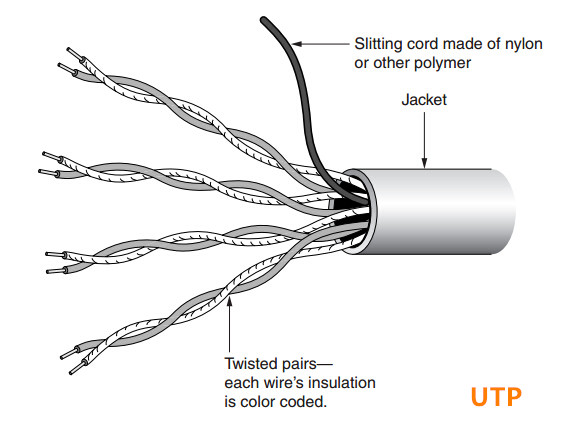
Features of UTP are listed below:
- Four-pair cables are typically used for horizontal cabling. Higher pair counts are often used for backbone cabling.
- Its conductors are not surrounded by a metallic shield to prevent electrostatic or electromagnetic coupling.
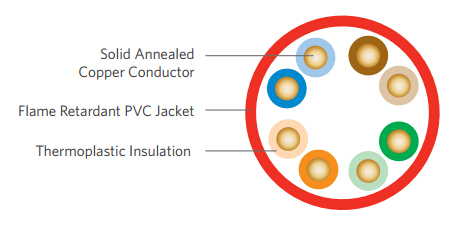
Shielded twisted-pair copper cable has a metallic shield which significantly reduces the instances of interference-related network problems. Though more expensive to purchase and install than UTP, STP offers some distinct advantages: it is less susceptible to outside electromagnetic interference (EMI) than UTP cabling since all cable pairs are well shielded. As with UTP, four-pair cables are typically used for horizontal cabling. When it comes to STP, four-pair cables are offered in two versions:
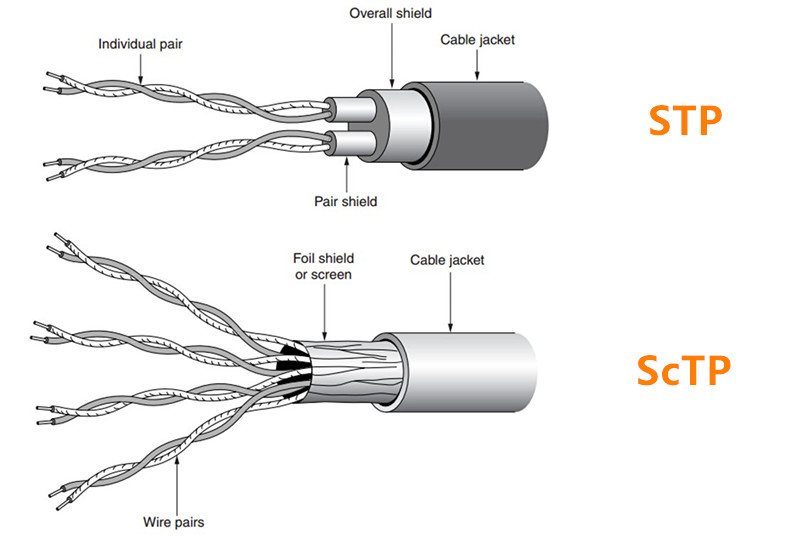
F/UTP (also referred to as ScTP) copper cable has an outer metal shielding covering the entire group of copper pairs. This type of shielding protects the cable from external EMI; however, the shield and drain wire add cost as well as size. The shield and drain wire also require bonding and grounding. F/UTP is recommended for use in hospitals, airports, or government/military communications centers.
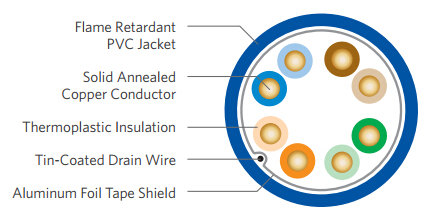
U/FTP (also referred to as STP) copper cable includes metal shielding over each individual pair of copper wires. Besides protecting the cable from external EMI, U/FTP provides better near end crosstalk performance than F/UTP. However, the multiple shields also add more cost and size. Like F/UTP, the shield and drain wire require bonding and grounding.
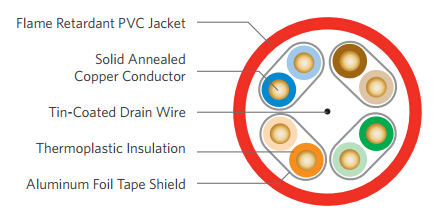
Network managers and cabling infrastructure designers are constantly in the dilemma to choose between these copper cables. Here we offer a solution for your reference.
For typical office environments, UTP cable always serves as the best choice (until fiber network components drop in price). Most offices don’t experience anywhere near the amount of electromagnetic interference (EMI) necessary to justify the additional expense of installing shielded twisted-pair cabling.
As for environments like hospitals and airports, it would be more beneficial to apply a shielded or screened cabling system. The deciding factor seems to be the external field strength. If the external field strength does not exceed three volts per meter (V/m), good-quality UTP cabling should work fine. If the field strength exceeds three V/m, shielded cable will be a better choice.
We have illustrated the characteristics and possible uses of different types of copper cable in this article. When it comes to horizontal cabling, your choice should base on the specific cabling environment and condition. Hope what we discussed here could help you to make the right decision.
